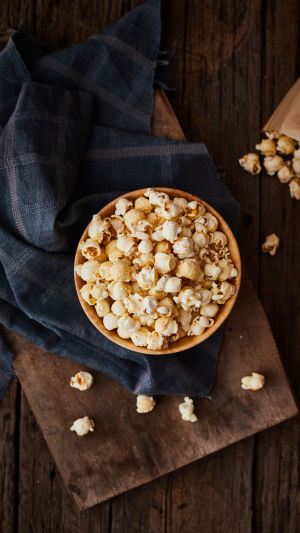Popcorn, a staple of movie nights and gatherings, is more than just a snack; it's an experience. The sound of kernels popping, the aroma permeating the air, and the initial taste of a freshly made batch are incomparable experiences.
This essay will guide you through making popcorn, from selecting and storing the kernels to the final steps of popping and seasoning, guaranteeing a delightful snack every time.
<h3>How to store popcorn</h3>
The secret to perfect popcorn begins long before the kernels hit the heat—it starts with proper storage. Keeping popcorn kernels in a cool, dry place ensures they retain their moisture, which is critical for the popping process. Moisture inside the kernel causes it to explode when heated, so if the kernels are too dry, they won't pop either. Airtight containers are ideal for storage, protecting the kernels from humidity and pests. For popcorn enthusiasts who prioritize freshness, storing kernels in the freezer can optimize their popping potential, guaranteeing that each kernel has the opportunity to transform into a fluffy, delectable snack.
<h3>The Popping Process</h3>
<b>Methods for Making Popcorn:</b> There are several methods for making popcorn, each presenting distinct advantages. The classic stovetop method embodies both control and tradition, imparting a sense of authenticity to the process, while air poppers provide a healthier alternative without the need for oil. Electric poppers and microwaveable options offer convenience and speed, but it's the stovetop method that captures the essence of popcorn-making. With its customizable nature and hands-on approach, it allows for a truly immersive and rewarding experience.
<b>Ingredients and Tools:</b> For the stovetop method, you'll need:
1. High-quality popcorn kernels.
2. Cooking oil with a high smoke point, such as coconut, canola, or peanut oil.
3. Salt and other seasonings to taste.
4. A large pot with a lid.
<b>Step-by-Step Stovetop Popping</b>
1. Begin by heating a thin layer of oil over medium-high heat in a large pot. The oil should cover the bottom of the pot. Once the oil is ready, add a few kernels and wait for them to pop.
2. Once the test kernels pop, add the remaining popcorn kernels in an even layer. Cover the pot with a lid, leaving a slight gap for steam release to prevent sogginess.
3. Gently shake the pot over the burner to evenly distribute heat and prevent burning at the bottom.
4. As the kernels start popping vigorously, monitor until the popping slows to about 2 seconds between pops. Remove the pot from heat and keep shaking until popping ceases completely to prevent burning.
5. Transfer the freshly popped popcorn to a spacious bowl. While still warm, season generously with salt or preferred seasonings. For added flavor, melt butter and drizzle over the popcorn, ensuring an even coating.
The process of making popcorn harmonizes science and art, creating a ritual that elevates humble kernels into a cherished snack. Through careful selection of storage methods and mastery of the stovetop popping technique, one can consistently produce delicious popcorn boasting the perfect texture and flavor profile.





